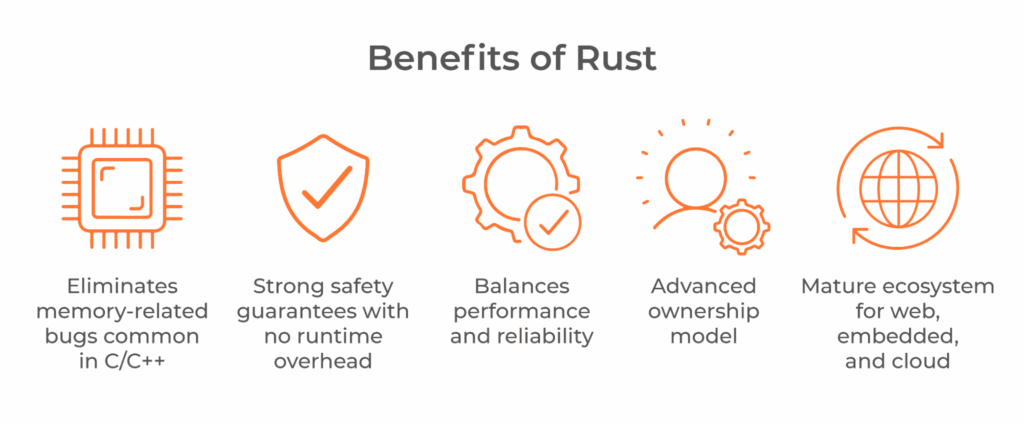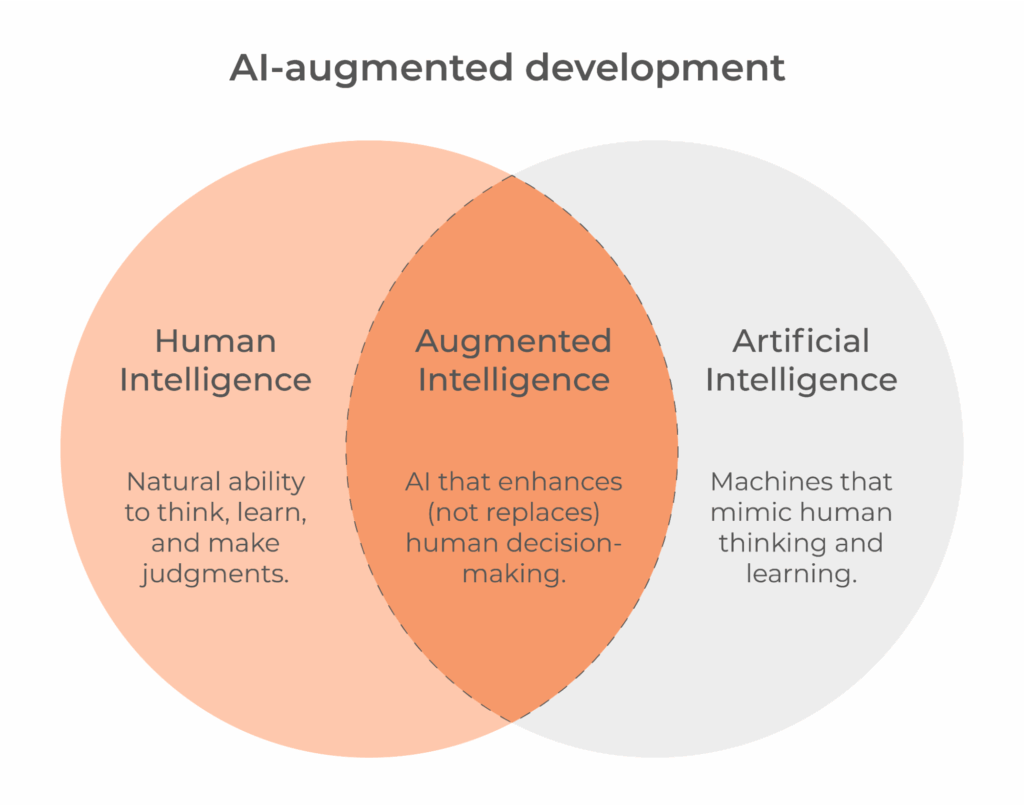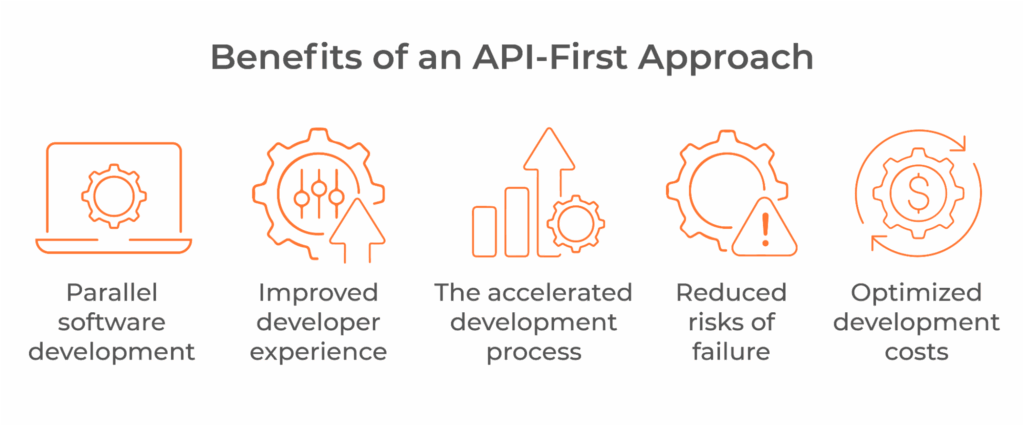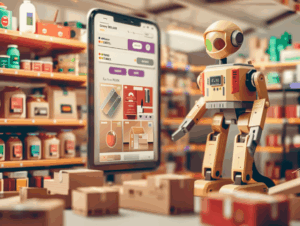Software development keeps changing. The tools, languages, and approaches developers use are changing in response to new challenges and opportunities. These changes affect everyone who builds software, from small startups to large enterprises.
This article looks at ten key trends that will matter most in the coming year. Whether you’re a developer, team leader, or business owner, understanding these trends will help you make better decisions about your software projects.
Key takeaways
- Programming languages are evolving for safety and performance, with Rust leading a shift toward memory-safe systems programming.
- Development is becoming more declarative and event-driven, focusing on describing what systems should do rather than how they should do it.
- Cross-platform and AI-augmented development are allowing smaller teams to build more sophisticated applications that work consistently across different environments.
Industry overview
In 2025, the software development landscape bears little resemblance to just five years ago. Traditional coding practices now coexist with AI pair programmers, with data showing that 41% of all code is now AI-generated.
Development cycles that once took months now complete in weeks or even days, driven by continuous integration pipelines that automate testing processes across the industry.
Meanwhile, cross-functional product teams have replaced siloed development departments in many Fortune 500 companies, blurring the lines between business and technical roles.
For CTOs and development leaders, understanding what’s coming next means making strategic bets on which approaches will deliver measurable business outcomes.
Top 10 trends in software development
As we move toward 2026, several key trends are reshaping how software is built, deployed, and maintained. Let’s take a closer look at the fundamental shifts that will affect development teams of all sizes across industries.
1. Rust’s rise to enterprise dominance
Rust is moving from specialized use cases to mainstream enterprise adoption. Major companies are rewriting performance-critical systems in Rust to eliminate entire categories of memory-related bugs that plague C and C++ codebases. The language’s compiler now offers more helpful error messages and faster compile times, addressing early adoption barriers.
Development teams appreciate Rust’s strong safety guarantees without runtime overhead, making it ideal for systems where performance and reliability are equally important. The ecosystem has matured significantly, with robust libraries for web services, embedded systems, and cloud infrastructure.

Most importantly, Rust has influenced other languages, with many adopting its ownership model and safety features. Even in organizations not using Rust directly, its concepts have changed how developers think about memory management and concurrency, raising the bar for what’s expected in modern programming languages.
2. WebAssembly beyond the browser
Once confined to browsers, WebAssembly now functions as a universal runtime environment. Developers deploy applications written in various languages (Python, Ruby, Go, Rust) to servers, edge networks, IoT devices, and cloud platforms without modification.
This approach allows teams to write code once and run it almost anywhere, reducing the complexity of targeting multiple platforms. Container deployments include WASM modules alongside traditional containers for lightweight, fast-starting components.
The security benefits are substantial. WASM’s sandboxed execution model provides strong isolation between components while using fewer resources than traditional virtualization.
This has made it particularly valuable for edge computing where resources are limited, but security remains critical. Cloud providers now offer specialized WASM runtimes that start in milliseconds and scale to zero when idle, enabling more efficient resource utilization.
3. AI-augmented development
AI tools now transcend simple code completion, functioning as full development partners that understand code at a deeper level. These systems suggest entire implementation approaches, identify potential bugs, and explain complex codebases to new team members.

The most significant impact has been on testing, where AI generates comprehensive test suites by analyzing code behavior. These tests often uncover edge cases human developers might miss, improving overall software quality. Maintenance work has been transformed by AI systems that can refactor legacy code while preserving behavior, gradually modernizing old systems.
Teams using AI assistants effectively can focus more on creative problem-solving and less on routine implementation details. Junior developers benefit particularly, as AI tools provide context and suggest improvements that accelerate their learning and productivity.
4. Event-driven microservices
Event-driven architecture stands out as the preferred approach for building microservices systems. Instead of services directly calling each other, they publish events when state changes and subscribe to events they care about. This loose coupling makes systems more resilient and easier to evolve.
Streaming platforms function as the central nervous system for many applications, processing events in real-time and connecting otherwise independent services. This approach has proven valuable for systems that need to react quickly to changing conditions, like financial trading platforms or logistics systems.
Development teams appreciate that event-driven systems can be more easily tested and understood in isolation. Each service has clearer boundaries and fewer direct dependencies. Teams can now evolve their portions of the system independently, as long as they maintain compatibility with the events they produce and consume.
5. Infrastructure as Code evolution
Infrastructure as Code (IaC) practices now extend beyond basic provisioning scripts to full declarative models of entire environments. Developers now describe what they want rather than how to create it, letting specialized tools determine the optimal way to achieve the desired state.
GitOps workflows have standardized how these configurations are managed, with git repositories serving as the single source of truth for infrastructure. Automated systems continuously sync the actual state with the declared state, healing drift and ensuring consistency across environments.
Policy as code has emerged as a critical extension, allowing teams to define compliance and security requirements that automatically validate infrastructure changes. This approach catches potential issues early in the development process rather than after deployment. Together, these practices have made infrastructure management more predictable and reduced the specialized knowledge needed to maintain complex environments.
6. API-first development
The API-first approach fundamentally changes how software is designed. Teams now define and stabilize APIs before implementing the underlying functionality, ensuring all components have clear contracts and interfaces from the beginning.
Contract-driven development tools automatically validate that implementations match their API specifications, catching integration issues during development rather than in production. These tools generate documentation, test cases, and even mock implementations from the API definitions, accelerating the development process.

Developers treat APIs as products with their own lifecycle, independent of specific implementations. This approach enables teams to evolve internal implementations without disrupting consumers, creating more stable ecosystems.
7. Serverless computing maturity
Serverless platforms now support complex application patterns, not just simple function execution. Developers now compose multiple functions into sophisticated workflows with built-in error handling and state management. Cold start issues have been largely solved through improved container reuse and lightweight runtimes.
Enterprise adoption has accelerated with better tools for monitoring, debugging, and local development. Teams can now develop and test serverless applications on their local machines with high fidelity to production environments. Integration with existing systems has become more straightforward with specialized connectors for databases, message queues, and legacy applications.
The cost model continues to be compelling – companies only pay for actual usage rather than provisioned capacity. This has made serverless the default choice for new applications with variable or unpredictable load patterns. Even consistent workloads often use serverless for parts of their architecture to improve scalability.
8. Database paradigm shifts
The traditional boundaries between relational and NoSQL databases continue to dissolve. NewSQL databases now offer the ACID guarantees of traditional relational systems with the horizontal scalability of NoSQL. Multimodel databases support different data models (document, graph, key-value) within a single system, simplifying data architecture.
Edge computing drives innovation in data synchronization, with databases that can operate offline and reconcile changes when connectivity returns. This capability is essential for applications that need to function in environments with intermittent connectivity.
Query languages grow more powerful and consistent across different database types. GraphQL influences how developers think about data access, with many databases now offering similar declarative approaches to retrieving exactly the data needed without over-fetching. These improvements have made it easier for developers to work with data regardless of the underlying storage mechanism.
9. Embedded AI development
Applications incorporate AI capabilities directly rather than calling external services. Specialized frameworks allow developers to run machine learning models efficiently on resource-constrained devices, from smartphones to IoT sensors. These on-device models protect privacy by processing sensitive data locally rather than sending it to cloud services.
Development tools simplify the process of optimizing models for specific hardware, automatically adjusting precision and structure to balance performance and accuracy. This has made AI features accessible to mainstream developers without requiring deep expertise in machine learning.
The approach proves valuable for applications that need to function offline or with minimal latency. Voice interfaces, image recognition, and predictive text now work smoothly even without internet connectivity.
10. Cross-platform development 2.0
Cross-platform development delivers truly native-quality applications rather than compromised experiences. Modern frameworks allow developers to write code once and deploy it across mobile, desktop, and web platforms while accessing platform-specific features when needed. This approach significantly reduces development time while maintaining excellent performance.
UI frameworks automatically adapt to different platforms’ design languages and interaction patterns. An application feels like a proper iOS app on iPhone and a proper Android app on Samsung devices without requiring separate codebases or designs.
These tools handle complex, performance-intensive software, not just basic applications. Game developers, productivity applications, and even creative tools now use cross-platform approaches successfully. The productivity gains are substantial – teams can focus on building great features rather than reimplementing the same functionality across different platforms.
Conclusion
These ten trends highlight how software development continues to become both more powerful and more accessible. The tools and techniques available to developers in 2026 will enable smaller teams to build more sophisticated, reliable, and efficient systems than ever before. The most successful organizations will be those that view these trends not as technical challenges, but as opportunities to solve real business problems in new ways.
✍️ Need help preparing your software systems for these upcoming changes? Setronica works with companies to build solutions that take advantage of these emerging technologies. Fill out the form below to discuss your project and how these trends might shape your software strategy.
Chapters
- Key takeaways
- Industry overview
- Top 10 trends in software development
- Conclusion



